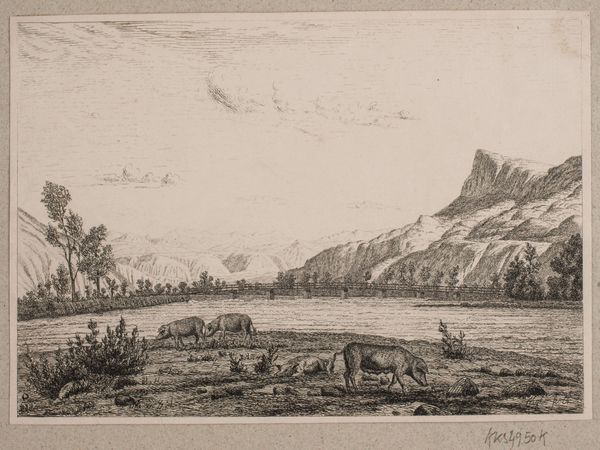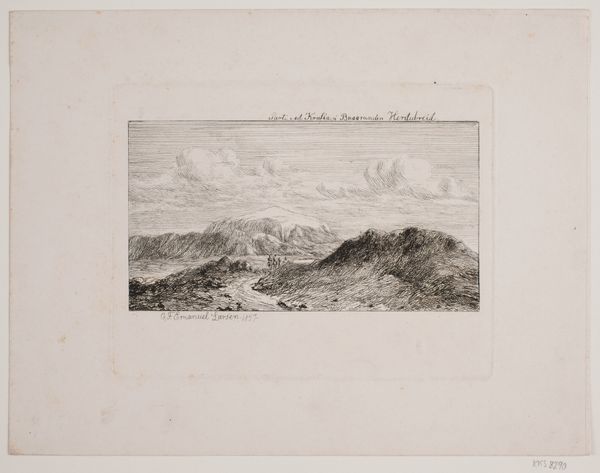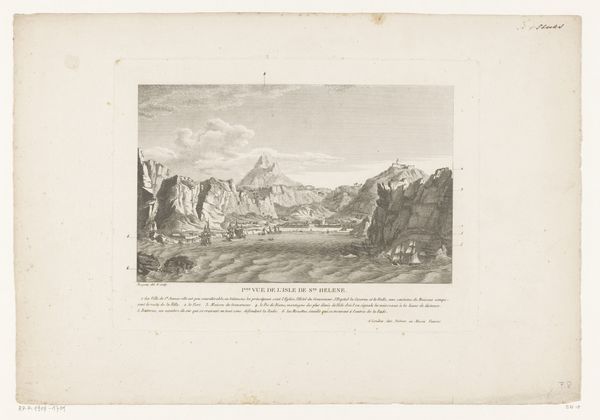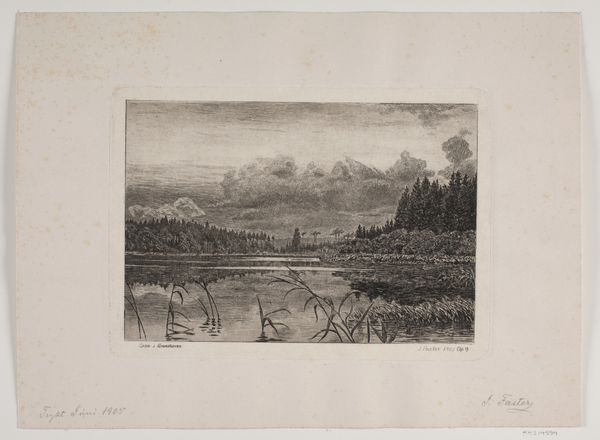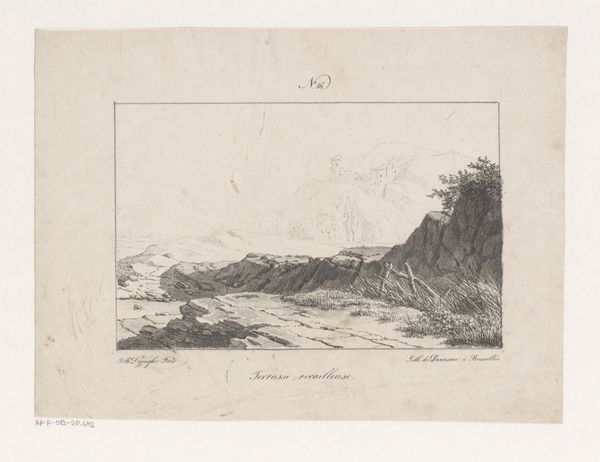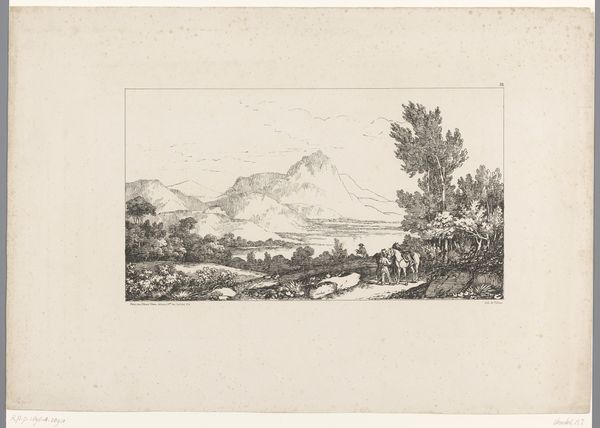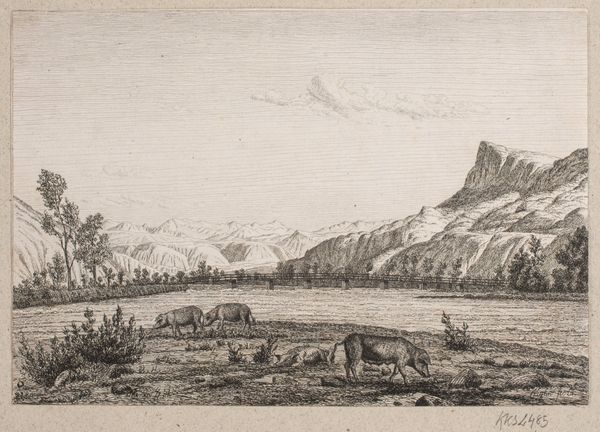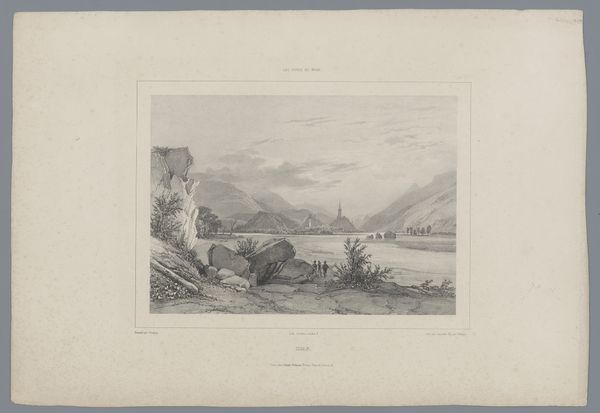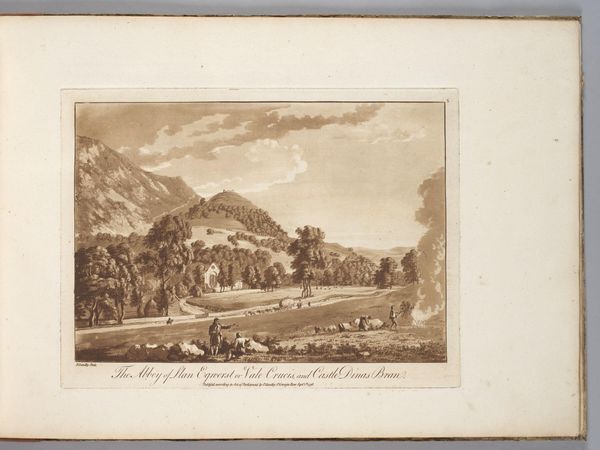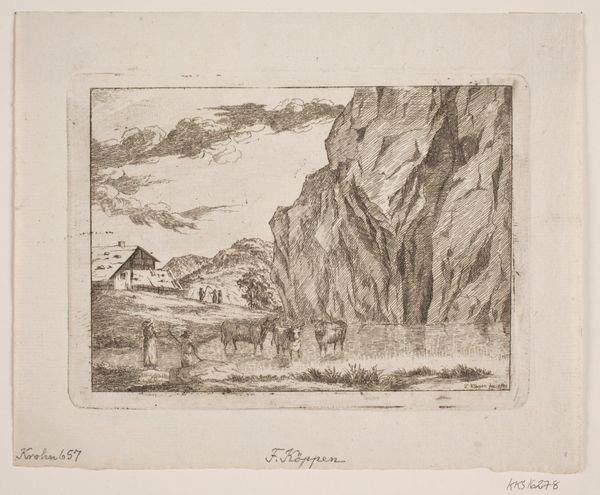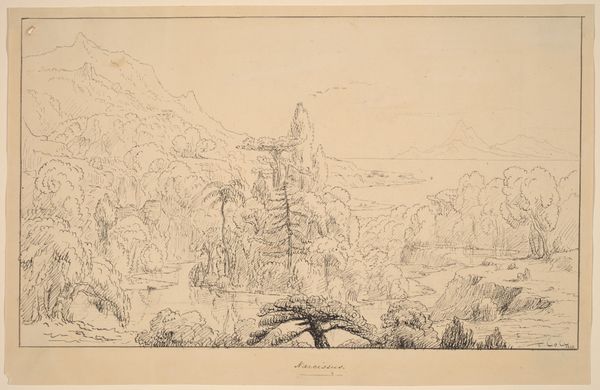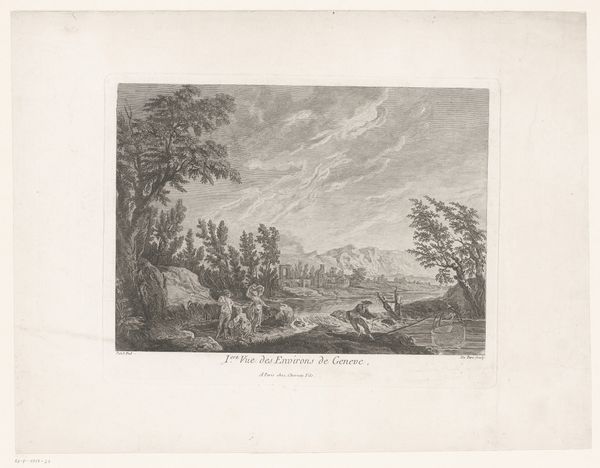
print, etching
# print
#
etching
#
landscape
#
etching
#
realism
Dimensions: 213 mm (height) x 268 mm (width) (plademaal)
Curator: Looking at Vilhelm Kyhn's "Mountain Scenery in Tyrol" from 1854, created using the etching technique, what are your initial impressions? Editor: Austere and incredibly detailed! The tonal range is subtle yet effective. The scale feels vast despite the modest size of the print. I find the rendering of light and shadow particularly skillful—notice how they create depth and texture, particularly in the mountain on the right side. Curator: Indeed. Let's delve into the materials and techniques involved. As an etching, it's a testament to the artist's technical ability to translate landscape into a graphic language. Consider the social context: Landscape art often served to reinforce ideas of national identity and the romantic appreciation of nature. It makes you think about Kyhn's potential audience and the consumption of this landscape at the time, right? Editor: Precisely! And in Kyhn’s formal construction here, that distant mountain becomes monumental, dominating the scene and emphasizing the sublime aspects of nature that Romanticism so esteemed. The lines composing the rocky outcroppings have such incredible nuance too. Curator: It’s interesting how this depiction aligns with, or perhaps diverges from, the conventional depictions of the Tyrolean landscape in the mid-19th century. Etchings like this were more affordable, helping democratize the viewing and distribution of art among middle classes and the production means here definitely matter. Editor: Certainly. Considering his use of line, there is something incredibly striking in the way it guides your eye across the landscape. And there’s a distinct structural balance, with the mountain offset by the group of trees. These visual elements add to the experience of an ordered wilderness, don't you think? Curator: Yes, and thinking about its consumption by the growing Danish middle class, those wild pigs there root around, seemingly oblivious of the bigger, spectacular landscape beyond, maybe symbolic of human engagement within nature during a time of increased industrial production? Editor: The etching work is rather impressive though. What’s most powerful here lies in the intrinsic elements – how light plays on the water, how the atmospheric perspective emphasizes distance... The pure artistic choices make for such an impactful and serene representation of the Tyrolean landscape. Curator: Agreed, it has been very insightful. Thinking more about Kyhn’s method now reveals that he definitely captured a feeling for nature during the nineteenth century in Europe!
Comments
No comments
Be the first to comment and join the conversation on the ultimate creative platform.
